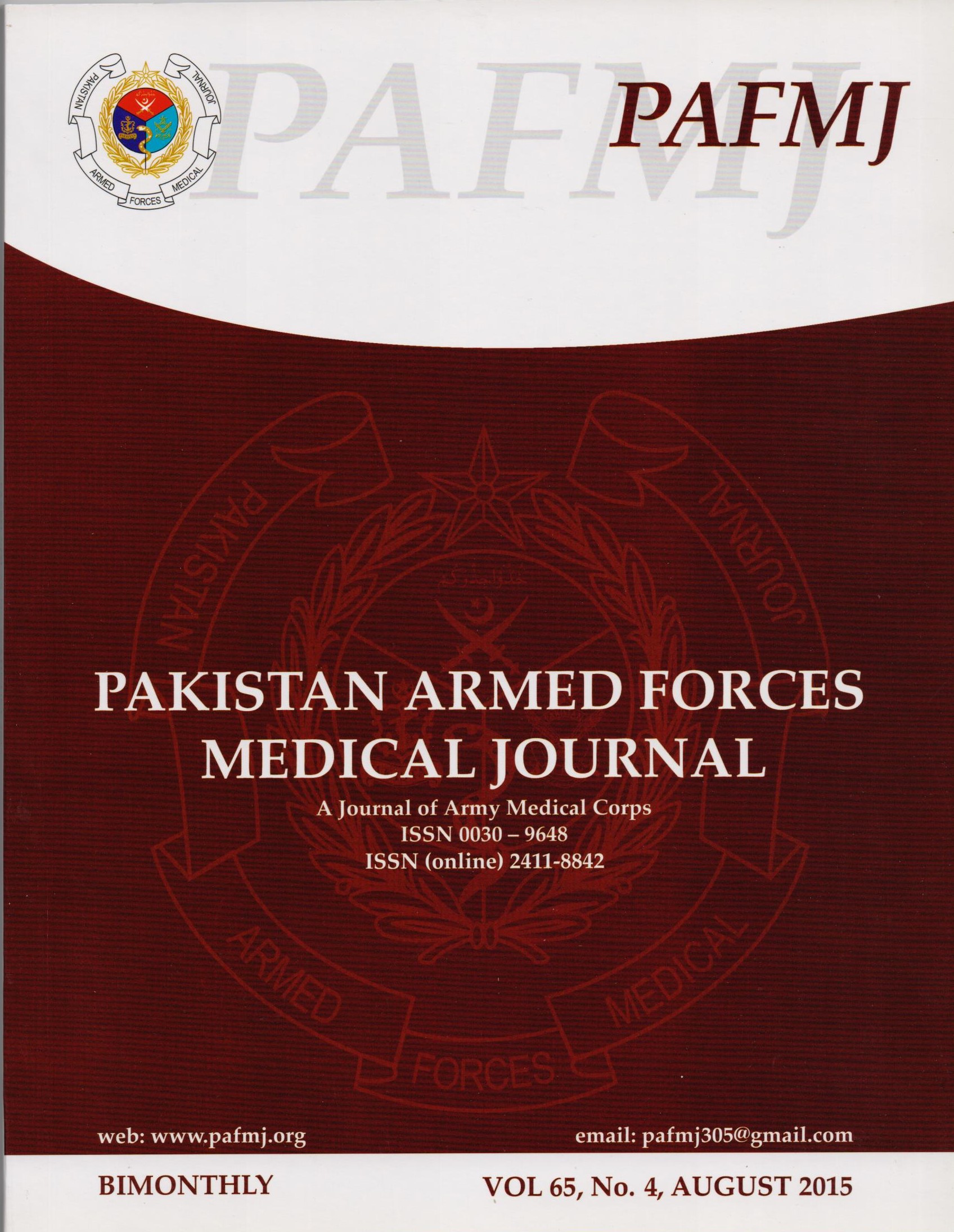PATTERNS OF RADIOGRAPHIC DAMAGE TO CERVICAL SPINE IN POLYARTICULAR JUVENILE IDIOPATHIC ARTHRITIS PATIENTS PRESENTING TO TERTIARY CARE HOSPITAL IN PAKISTAN
Damage to Cervical Spine in Polyarticular JIA
Keywords:
Cervical spine, Polyarticular juvenile idiopathic arthritis, RadiographsAbstract
Objective: To see the radiographic cervical spine damage in polyarticular juvenile idiopathic arthritis (PJIA) coming to a tertiary care hospital in Islamabad, Pakistan.
Study Design: Cross-sectional descriptive study.
Place and Duration of Study: The study was conducted in department of Rheumatology at Pakistan Institute of Medical Sciences from Jun 2013 to Dec 2013.
Subjects and Methods: A total of 50 patients of PJIA coming to Rheumatology Outpatient Department were recruited in the study after informed consent. Radiographs of cervical spine were performed for each patient in antero-posterior, lateral with flexion and extension and open-mouth views. Radiographs were reviewed for the following features: loss of cervical lordosis, odontoid process erosion, anterior atlantoaxial subluxation, C1-C2 arthritis, atlantoaxial impaction, inflammation of disc, apophyseal joint arthritis, anterior ankylosis, apophyseal joint ankylosis, anterior and posterior subaxial subluxation and growth disturbances. Data was analysed using SPSS version 18.
Results: Out of the total 50 patients, 28 (56%) were females while 22 (44%) were males. The mean duration of pJIA was 5.54 ± 3.28 years. Radiological cervical spine involvement was seen in 52% patients. The most common structural lesions were anterior atlantoaxial subluxation (30%), C1-C2 arthritis (22%) erosion of the odontoid process (18%), and apophyseal joint arthritis (16%). Loss of cervical lordosis was found in 7(14%) patients. There was no growth disturbances observed in vertebra.
Conclusion: Cervical spine involvement is common in patients of PJIA. It is mostly asymptomatic, so routine cervical spine radiographs in all patients suffering from PJIA is recommended.











